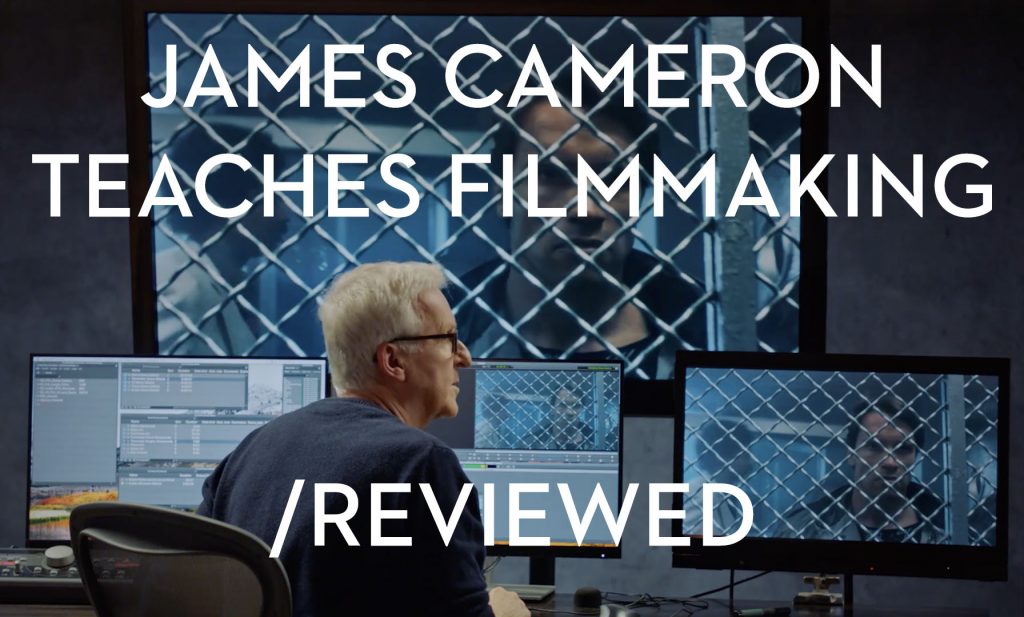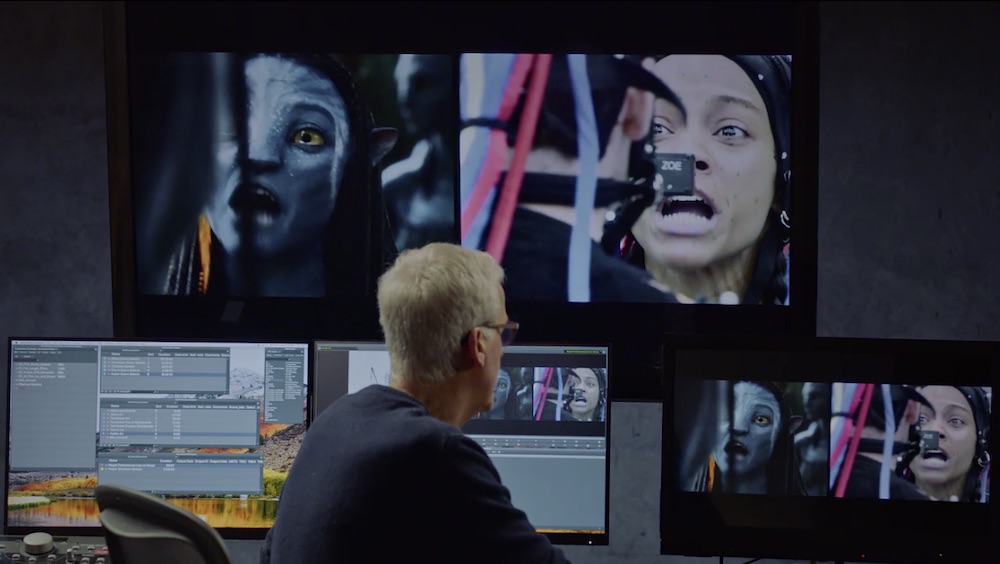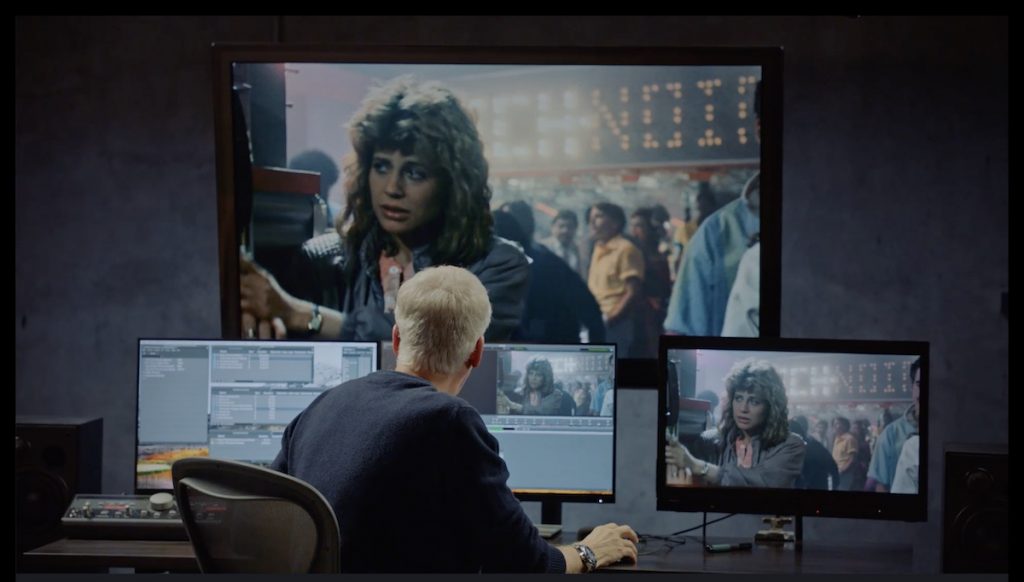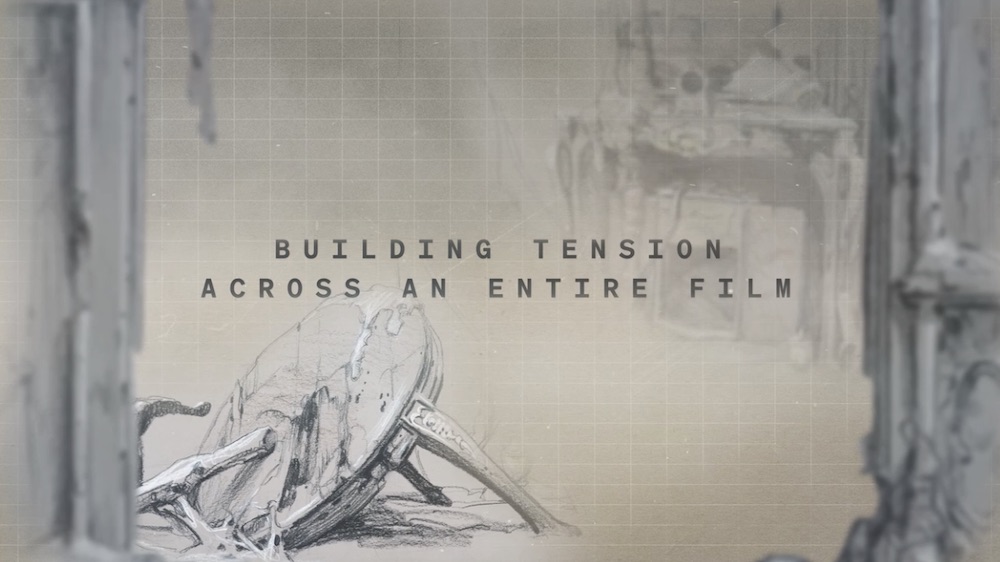James Cameron Filmmaking Masterclass Reviewed

Director James Cameron has passed the “most expensive movie ever” milestone three times in his career:
- Terminator 2: Judgment Day ($100 million in 1991)
- True Lies ($140 million in 1994)
- Titanic ($200 million in 1997)
But what’s great about his new filmmaking masterclass from Masterclass.com, is that the focus is (mostly) on low-budget filmmaking techniques, that anyone can learn from, with insights on how he brought The Terminator to the screen, through years of preparation, by relying on the strengths he had – having done some visual effects with Stan Winston and previously helmed second units and ultimately writing a script to a budget he knew he could get.
I can’t emphasise enough the importance of curiosity.
I think curiosity is how you’re going to find your stories.
James Cameron
I’m a huge fan of Masterclass.com and think that an annual subscription is well worth the money, given the incredible list of world-class people to learn from, and so when James Cameron’s class launched, I was seriously interested to see what I could learn from him, and how it compared to other director’s masterclasses, such as Ron Howard, Spike Lee or Martin Scorsese.
Overall, I really enjoyed the course.
It’s an eye-opening and inspiring journey into the filmmaking process from the perspective of both a low-budget action filmmaker (who made The Terminator for about $4 million in 1984 dollars) and the cutting edge of motion-capture driven fantasy world building auteur.
There is also plenty for editors to learn about building tension through effective cross-cutting, the impact of a few frames difference and how everything comes together in post.
In comparison to the other directors classes on Masterclass.com, James Cameron’s follows a unique thematic thread of what it takes to build action set pieces, ratchet up the audience’s emotions and VFX orientated filmmaking.
This is all quite different to Ron Howard’s or Spike Lee’s classes, which is what makes the all-access subscription so good, you get everything, so you’re not forced to pick and choose!
It’s worth knowing that Masterclass.com run promotions several times throughout the year, (Father’s Day, Mother’s Day, Thanksgiving etc.), which gives you and a friend the opportunity to go halves on their usual buy-one-give-one offer.
UPDATE June 2023 – Masterclass is now more affordable!
A new pricing tier, that works out to £10/month when billed annually, will save you £48/year compared to previous pricing of £14/month. The only difference is no downloads and 1 device.
James Cameron Teaches Filmmaking Masterclass – What do you get?
James Cameron Teaches Filmmaking has contains 15 lessons, which are roughly split into two categories.
Interviews on the art, craft, and technique of filmmaking and then a series of shot by shot breakdowns of specific scenes or filmmaking techniques from Terminator, Aliens, Titanic and Avatar.
These breakdowns are some of my favourite parts of the course, but the whole thing is well worth your time, as James is articulate, wise and informative.
The 15 course lessons include:
- Meet Your Instructor: James Cameron
- Pursuing and Developing the Idea
- Toying with the Audience: Building and Releasing Tension
- The Terminator Club Scene Breakdown
- Aliens Egg Chamber Breakdown
- Aliens Newt Introduction Scene Breakdown
- The Art of Low-Budget Filmmaking
- The Terminator Arm and Eye Repair Breakdown
- From Sketch to Spectacle: Creating Set Pieces
- The Terminator Future World Breakdown: Creating a set piece on a budget
- Crafting and Introducing Compelling Characters
- Titanic Rose Introduction Breakdown
- Developing Dread Through Adversaries
- Avatar Creating Technology
- Making Your Way and Leading with Passion
There is also a really beautifully put together PDF workbook to download too, which is basically an overview of the filmmaking process and includes ‘course assignments’ for anyone look to put their learning into practice.

Every filmmaker stands, essentially, on the shoulders of the filmmakers that went before.
We see what they’ve done. We react to it. And then we start to create out own aesthetic…
And so it’s endlessly renewing and endlessly invigorating.
James Cameron
The interview portions of the masterclass have been shot against green screen, which I mostly was fine with – as they swap out the background to be relevant to the kind of topic he’s discussing – but there are a few times where the key and the composite fall apart a bit, which to me was a little distracting.
For the most part James Cameron was blisteringly clear, concise and articulate showcasing just how much he knows his craft inside and out. There were times where he wandered into more esoteric territory in some of the broader interview segments, but I felt he was at his best, sat at the Avid moving frame by frame, shot by shot, through some of his cinema-reshaping films.
James Cameron – Insights on Big Budget Filmmaking

With the purportedly $1 billion price tag for the four Avatar sequels currently in production, the later lesson on James Cameron’s multi-decade journey to making Avatar is a good reminder of what it takes to create a motion capture driven film.
From the moment you capture it you’re at least a year a way from seeing a shot, which is a thing in and of itself, I don’t recommend people making a movie like Avatar, but it’s good for people to know, even if they’re just starting out, to know what can be done.
James Cameron
One of the things that he stresses in the class is how the actors have to do the actual performance on the day, you can’t cheat it later on, but that the ability to capture all your angles in one take saves time and energy on the part of the actors, who might traditionally have to have delivered the same performance 30 times in 6 different set ups over 5 different takes.
One of the key-takeaways any editor should leave the class with is a hunger to learn more about the language and techniques of visual effects, compositing, computer animation etc. as they are only going to become even more tightly woven into future filmmaking processes.
If that’s you, one starting point would be this round up of training for Learning High-End Finishing Techniques in DaVinci Resolve Fusion.
5 Things Editors Can Learn from James Cameron Teaches Filmmaking, Masterclass

1. Plant and Pay off
There’s one thing that a lot of filmmakers take a while to figure out. Which is that it’s OK for the audience to be ahead of you.
It’s okay because the tension that goes before a reveal or a cathartic moment, is so much more delicious, when it’s actually paid off in a way that you hoped for, than some utter surprise that’s not satisfying at all.
James Cameron
You plant something and you pay it off.
Part of James Cameron’s directing thesis is that films are inherently participatory. The audience is gaming out in their imaginations, in real time, various scenarios about what’s going to happen next.
And the contract with the filmmaker is to plant clues and ideas and then pay them off later.
In the lesson they give the example of Ridley being able to drive a mech-loader early on, which then is paid off when she fights the Alien at the end, from inside the mech-loader.
Sometimes you should pay off that plant in a way that plays against their expectations or in a way that is what they hoped for, but maybe requires some sacrifice that they didn’t anticipate.
As editors we should be tracking what we are planting and how we are paying that off.
And if we’ve planted something that we then don’t pay off, it will be a nagging loose thread that might distract the audience. Or if we don’t get the pay off we need, have we worked in the plant successfully in the first place?
2. The Anatomy of Tension
According to Cameron the anatomy of tension requires three things:
- That we care about the characters (invested in the outcome)
- That there is a clear time constraint (e.g. a ticking bomb under the table)
- That we understand from the context that they are in jeopardy (e.g. just walked into a haunted house)
If you don’t have all three of these things, or they are not clear enough, then it will be very difficult to build a sense of tension in the audience.
3. Cross Cutting Builds Tension

Cross cutting between the unsuspecting character and the threat that is approaching helps to build tension; “Creating a constant sense of escalation, of frustration. It’s a solution that might happen but isn’t.”
The lesson on The Terminator Club Scene Breakdown is a 17 minute mini-masterclass in itself on building and sustaining tension through cross-cutting between the different characters, the information that the audience has that the characters don’t yet have and that sense of imminent convergence of these three narratives lines for great dramatic effect.
What’s great about the breakdown is that you can learn, shot by shot, the construction of the scene, the different informational beats within it and the way in which all of these techniques work together, as explained by the director. It’s brilliant.
4. Holding the moment
The audience has to be led to believe something is going to happen soon, and then you prolong it… So you’ve told them to be in that state, and then you suspend that state, and then hold them in that state. So they don’t feel like it’s snatched from them before they’ve had a chance to feel it.
James Cameron
One of the things that Cameron articulates really well is the mechanism by which you can make your audience experience the emotional moments of your film to their fullest.
Whether that be fear or wonder you need to prolong the moment by holding the audience in that state, which takes discipline and a steady nerve to likely hold the shots longer than you otherwise might, or to elongate a moment by another set of cross cutting back and forth, but for the audience it will be all the more ‘delicious.’
She sees something, and we see it in her face.
And this is a beautiful piece of editing by Mark Goldblatt. He holds on it just enough frames for you to see her see something.
And we don’t know what it is.
James Cameron
5. Juxtaposition
And I just want to compliment Mark Goldblatt for doing a remarkable job on the cutting of this scene and refining it down to one-split second shot.
I think Kyle Reese is probably on the screen in the pivotal moment of this scene, for … (counts) … 10 frames.
After all these long slow motion shots, it all pivots on 10 frames.
James Cameron
Another simple but effective takeaway from the masterclass, and The Terminator Club Scene Breakdown in particular, is that the intensity of the action moment in the scene (where Kyle guns down the Terminator) has come off the back of the slow motion.
After all these long, slow, foreboding intercuts there are a series of 10, 16, 18 frames shots that happen in very quick succession with the sound design paired down to just the noise of guns blasting and people screaming, having ripped the score away with the first shot.
Seeing all these techniques laid out in fine detail and seeing the juxtaposition of different editing techniques back to back is a really helpful way of learning more about the craft of film editing.
Check out James Cameron Teaches Filmmaking for yourself, at Masterclass.com. You won’t regret it.




